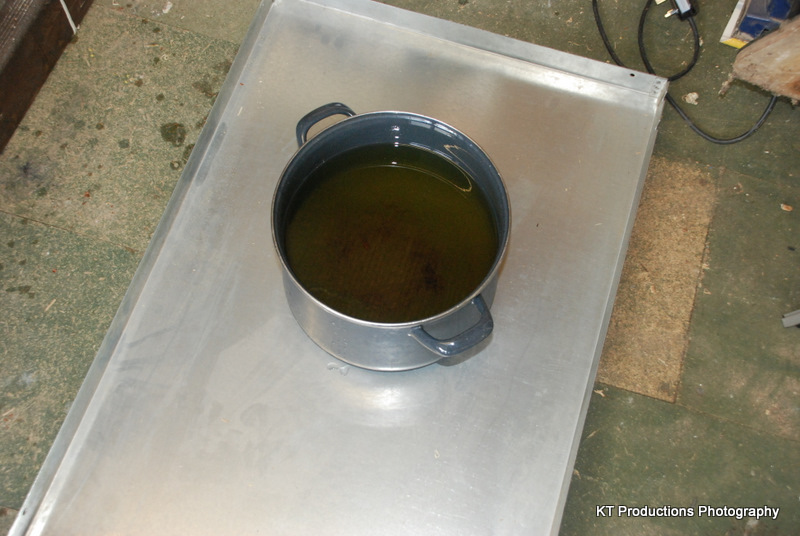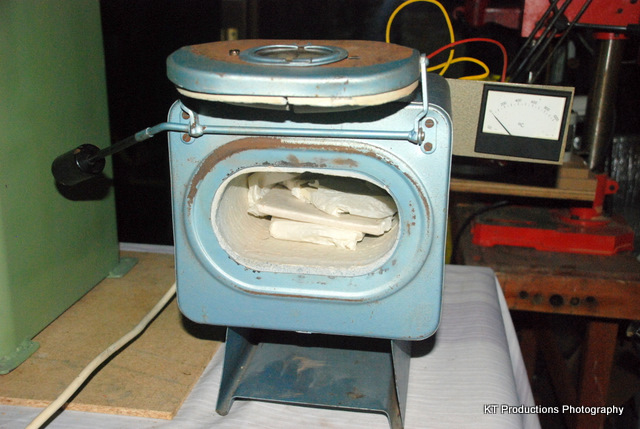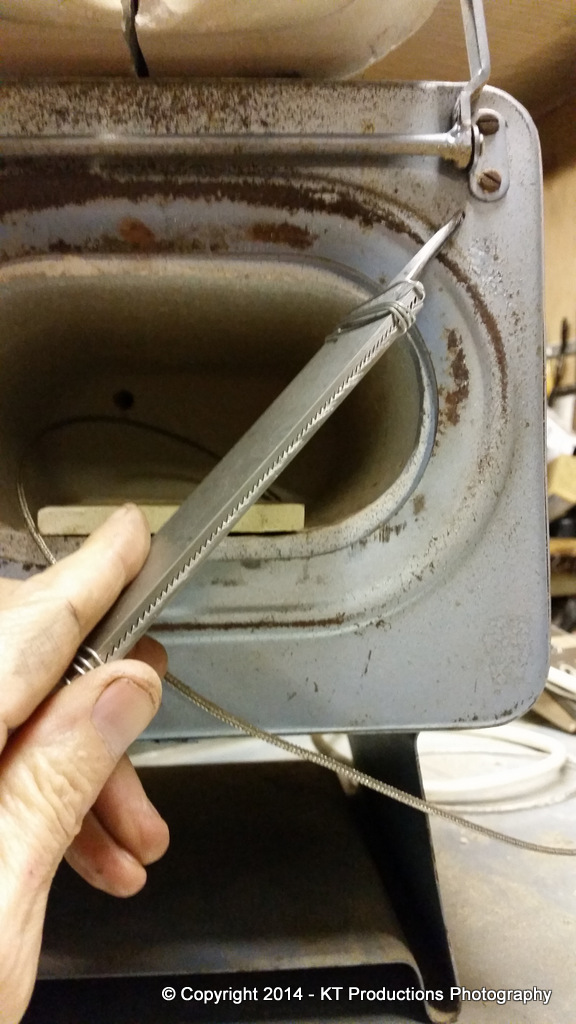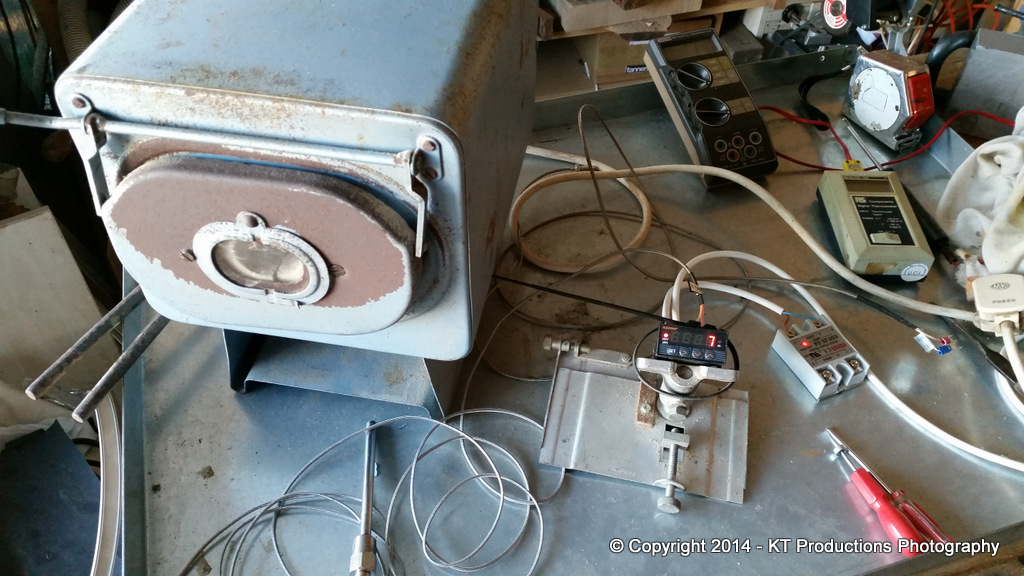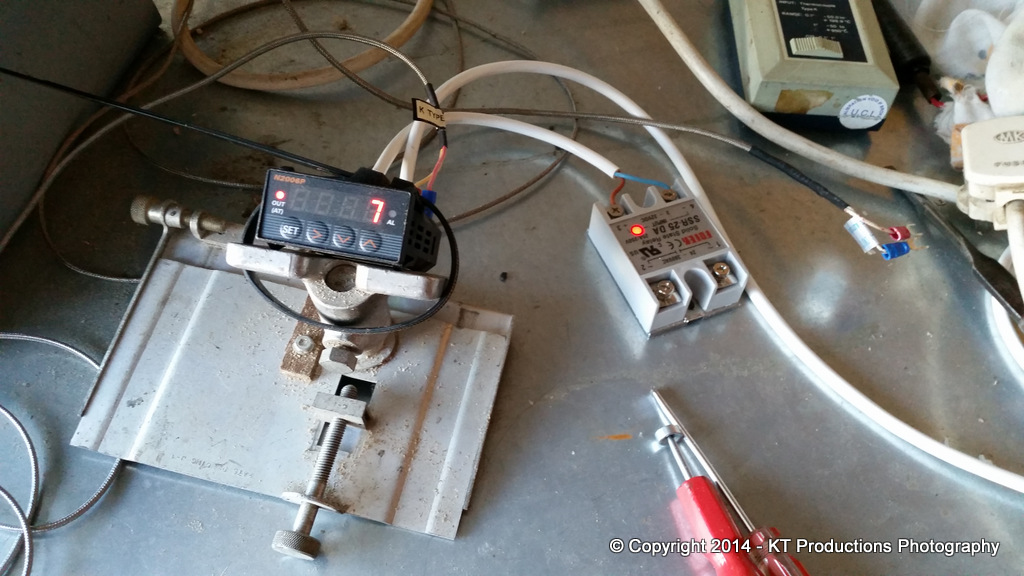This mysterious tool has created quite a bit of research..thanks guys for the various input.
There seems to be three schools of thought about these niche tools...
1) The old stories of creating them from dead files...tempering the file in the fire and cutting the teeth and either using as is or hardening fully and repeat when blunt.
2) Concerning new ones...harden to maximum and temper back very little...and repeating when blunt...akin to 1)
3) Again..from new tools stock...harden to maximum and temper back to around RC50ish and then sharpen as necessary until no more...like saws...then retooth.
I have to choose an option for this iteration of this build...so I have chosen option 3)
The reason for this is that option 1) is out (for now)....leaving option 2 or 3 and I have chosen 3) for no other reason than others have had some success with this...I can always re-harden and go to option 2) if this fails.
There has some discussion on the decarburization (ruining of tool steel by rapid leeching of carbon) of the sharp edges rendering them soft forever.
To prevent this...and since I have used charcoal in the furnace before...and since Aaron rightly states that this could ruin the element...I have gone for the prophylactic approach of preventing any oxygen present in the furnace from getting to the steel.
But first I came up with this idea...
By wiring them together face to face...and since the teeth mesh together if I fire both at once...I am further minimizing the exposure of the teeth directly to the oxygen.....and I hope prevents warping of either since they will be trying to fight each other! (that's the theory anyway!)
It shows how accurate that DRO on the mill is!!
A "slip" or rather "mud pie" of clay and Borax was then applied...in two coats and allowed to dry each time so that I could see the silver glint and patch up where necessary...this is now hardening.
Some time ago I bought a PID (proportional-integral-derivative) controller and SSR (solid state relay) from China for peanuts...so I thought I would test it out with a new thin K-Type thermocouple and control the kiln automatically...instead of switching it off and on manually for 15 minutes which is a real pain...
For those who are not familiar with industrial control devices...a PID will proportionally adjust the power getting to the heating element to keep it close to the desired temperature without much hysteresis or time lag. This stops it from constantly being under and over temperature caused by the slow reaction of the element.
As this electronics (box on the left showing it's SEVEN degrees out there BBBRRRR!)....is only capable of directly controlling up to 3A...an SSR or solid state relay is needed (white box on right with light on). This just allows more power as the PID controls this and the SSR then controls the power going to the kiln.
Chinese electronics has now allowed mere amateurs to have devices which were before only available on expensive kit.
So that's where we're up to at the moment....other things are going on in the workshop...so I hope to get this test batch of floats hardened and tempered this week....
Cheers
Jimi





